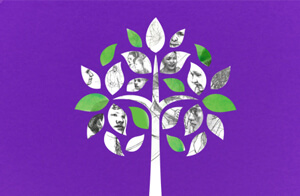Client Spotlight: NAACP
In 2011, the NAACP launched a strategic planning process that resulted in the creation of a powerful vision for the future and set organizational goals to guide its work in the 21st Century. These five goals — Economic Sustainability, Education, Health, Public Safety and Criminal Justice, and Voting Rights and Political Representation — are its “Game Changers.”
After its pivotal role in achieving some of the greatest civil rights victories of the nation’s past 100 years, the NAACP was not content to rest on its laurels, but instead asked “What’s next?” This meant returning to the Association’s original motivations: passionate dreams, audacious goals, and a united focus.
The Challenge
How do you go about developing strategy for the nation’s largest and oldest civil rights organization?
The NAACP had a tremendous legacy to build on, but it had also weathered its share of difficulties. In Benjamin T. Jealous it had a young and dynamic new leader, and he, in turn, assembled a top-notch staff. Still, the NAACP was a very dispersed organization, with hundreds of local branches and units nationwide, each operating with a high level of independence.
At the same time, the organization (like many other venerable movement-based nonprofits) had struggled with shrinking membership. The challenge of strategic planning was how to engage the membership in a meaningful way and to point a direction the entire organization would embrace.
Getting Back to the Mission
The Association had never engaged in a formal strategic planning process before, but had a unique lens through which to consider its future, having recently celebrated its 100th anniversary. Working with a strategic planning committee of 15 board and staff members, we asked these leaders to reflect on the NAACP’s greatest accomplishments of the past century, and then posed the question, “What would constitute equivalent achievements in its second century?”
A board member quickly provided the answer: complete the journey to full equality. From this starting point, we embarked on a wide-ranging and collaborative consultative process to determine what, precisely, that would look like, which included affirming the NAACP’s mission and exploring what it means in today’s dynamic social and political context.
It’s very easy, especially when you have organizations with impressive histories, for staff, boards, and members to lose sight of why we do what we do. What strategic planning empowered us to do was to get back to the mission.”
— Ben Jealous, President/CEO
Because of the dispersed nature of the organization, we knew that any strategic plan would have to be high-level, easy to grasp, and immediately actionable. Through a process of deep reflection, research, and consultation, the strategic planning committee identified five big-picture goals and supporting strategies to move the needle toward real equity for all people.
Turning Strategy into Action
The Game Changers were adopted unanimously by the board in 2012. For each goal, the NAACP identified specific indicators it will use to gauge its progress over time using U.S. government data (realizing this will be a long battle and requires reliable data for the duration). Each is stated as a measure of equity. For example, instead of saying, “More African Americans will achieve a Bachelor’s degree or higher,” the aim is that, “The same proportion of African Americans achieve a Bachelor’s degree or higher as in the general population.” The goal is not an idealized future, but a fair one.
To align all of its efforts, and its unique competitive advantages in reputation and reach, toward advancing these goals, the NAACP articulated an overarching organizational strategy rooted in its identity as a movement:
To achieve equality in these areas the NAACP will pursue its organizational strategy, which is to: educate, mobilize, and grow its membership, constituting a powerful grassroots civil rights movement, and energizing the nation through activism, civic engagement, and mobilizing voters at every level of the political process.
Knowing that successful implementation of the new strategy will require support and commitment from all across the organization’s large and diverse national network, the planning committee provided for local ownership of the work. For the NAACP, this meant offering opportunities to customize the strategic goals to unique state and local needs as well as building the capacity of state and local units so that they can more effectively participate in advancing the organizational goals.
In one community, this might mean working to get an African American sheriff elected in hopes of fairer policing. In another, it might be blood pressure screenings to reduce disproportionate mortality rates among African Americans due to hypertension.
Aligning for Long-Term Achievement
As a result of this strategic planning process, which included surveys, focus groups, and sessions at the Association’s national convention, the entire organization, from the board and CEO to the hundreds of local branches and units, is now clear as to the NAACP’s purpose and priorities for the next decade.
“The identification of the Game Changers was a huge effort to bring a very complex organization into unity around a simple set of objectives.”
— Ben Jealous, President/CEO
In addition to the strategic plan, the NAACP went a step further, creating a video summary for YouTube (embedded above), along with 90-second videos describing each Game Changer.
In the end, the nation’s oldest, largest, most powerful civil rights organization broke the mold. Instead of a traditional strategic plan for incremental change and short-term wins, the NAACP opted for a game-changing vision for the future, a compelling and powerful set of goals that will serve as the organization’s road map for as long as it takes to complete the journey.
“Strategic planning has empowered the organization to, over the next couple years of implementation, get back to being what we were 100 years ago: driven by dreams and mobilized all the way down to the grassroots.”
— Ben Jealous, President/CEO


Comment section